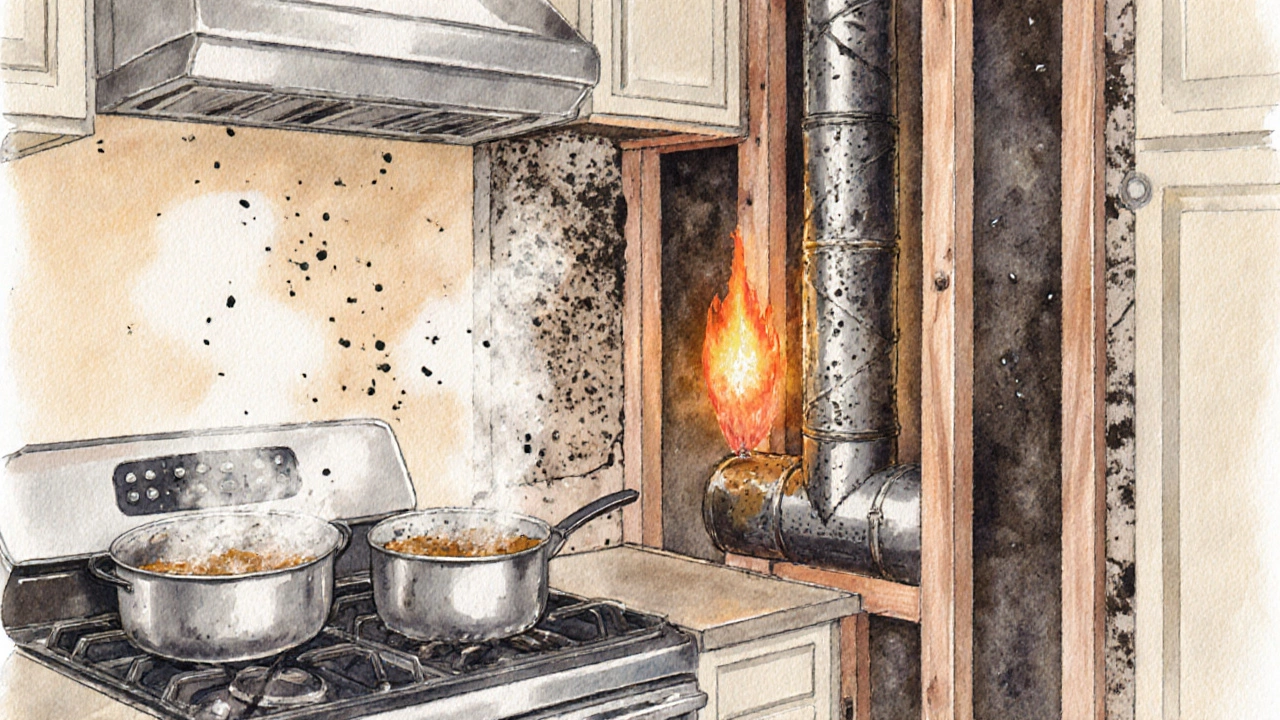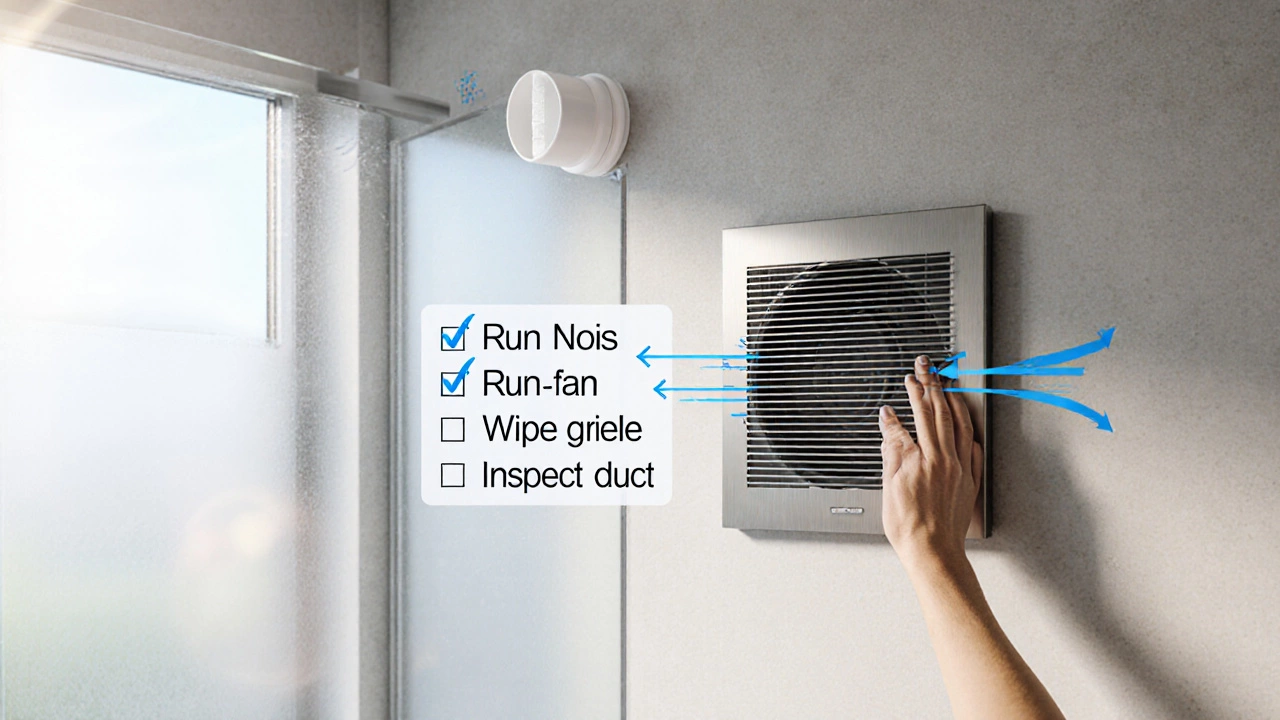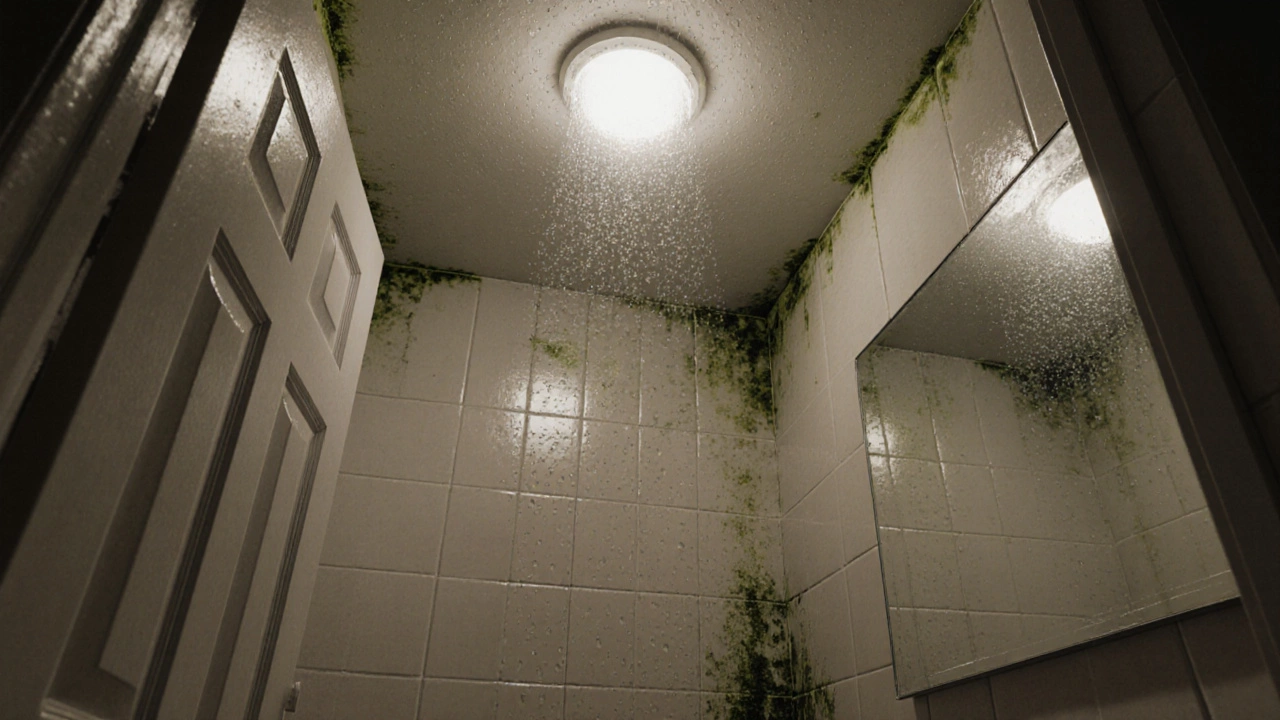Extractor Fan Airflow Calculator
Room Size Calculator
Enter your room dimensions to determine the minimum airflow capacity required for your extractor fan.
Recommended Airflow
Recommended Airflow Capacity:
Based on room size of m³ and industry standards for moisture removal
When you skip installing a extractor fan in a bathroom or kitchen, the hidden problems begin to stack up fast. Most homeowners think a fan is a luxury, not a necessity, but the reality is far from that. Below we break down what actually happens when you run a space without proper extraction, why the fallout matters to your health and home, and what you can do before the damage becomes irreversible.
Quick Takeaways
- Without an extractor fan, moisture levels rise, leading to mold, rot, and structural damage.
- Poor ventilation degrades indoor air quality, increasing allergens and respiratory risks.
- Cooking fumes and bathroom steam create greasy build‑up in ducts and can trigger fire hazards.
- Building codes often require mechanical extraction; non‑compliance may affect insurance and resale value.
- Regular maintenance of the fan and the ductwork prevents costly repairs.
What an Extractor Fan Actually Does
An extractor fan is a small mechanical device that pulls humid air, smoke, odors, and airborne particles out of a confined space and pushes them through an exhaust duct to the outside. In technical terms, it creates a pressure differential that forces stale air to leave the room, replacing it with fresh, drier air from other parts of the house. This simple action protects three core elements: the building fabric, the occupants’ health, and the efficiency of other HVAC components.
Rising Moisture and the Domino Effect
Every hot shower, boiling pot, or dishwasher cycle releases a cloud of water vapor. In a sealed bathroom or kitchen, that vapor condenses on walls, ceilings, and windows. Over time, the moisture content of the building envelope can climb above 60 % relative humidity.
When moisture stays trapped, two major problems appear:
- Moisture creates a perfect breeding ground for mold. Even a thin film of mold can spread spores throughout the house via air currents.
- Excess water seeps into plaster, drywall, and timber, causing swelling, softening, and eventually rot. Structural elements like joists and wall studs lose their load‑bearing capacity, which can lead to sagging ceilings or cracked walls.
According to a 2023 New Zealand home‑survey, 42 % of houses that lacked functional kitchen or bathroom ventilation reported visible mould within three years.
Indoor Air Quality Takes a Hit
Beyond visible damage, poor ventilation directly harms the air you breathe. Without a fan, indoor air quality (IAQ) drops due to:
- Increased concentration of volatile organic compounds (VOCs) from cleaning products and cooking oils.
- Higher levels of particulate matter (PM2.5) that can settle deep in the lungs.
- Elevated carbon dioxide, which can cause headaches and reduced concentration.
Health‑wise, this translates into more frequent asthma attacks, allergic reactions, and chronic sinus irritation. A 2021 study from the University of Otago linked low‑ventilation bathrooms to a 30 % rise in reported respiratory symptoms among occupants.

Specific Risks in Different Rooms
| Room | With Fan | Without Fan |
|---|---|---|
| Bathroom | Steam expelled, surface stays dry, mould unlikely. | Condensation on tiles, mirror fogging, mould on grout, wood rot. |
| Kitchen | Grease‑laden vapour removed, reduced fire hazard. | Grease film on exhaust duct, lingering odors, higher fire risk. |
| Basement Laundry | Dry clothes, low humidity, no mildew. | Clothes stay damp, mildew smell, pipe corrosion. |
Carbon Monoxide and Gas Appliances
Many homes use gas cooktops or instant‑hot water heaters in the same room as the fan. These appliances produce small amounts of carbon monoxide (CO) and nitrogen dioxide (NO₂). Without a fan, these gases accumulate, especially in tight‑fit renovations common in Wellington’s older houses. Even low‑level CO exposure can cause dizziness, nausea, and, over time, heart damage.
Installing a properly rated extractor fan that vents directly outside is often a legal requirement under New Zealand’s Building Code Clause G4 (Ventilation). Failure to comply can void insurance claims if fire or water damage occurs.
Energy Efficiency and HVAC Load
When moisture hangs around, your heating system works harder to dry the air. In winter, this can increase natural gas consumption by up to 15 %. In summer, an over‑humid home feels hotter, prompting higher air‑conditioner usage. The hidden energy waste adds up to hundreds of dollars a year.
Temporary Work‑arounds - Why They’re Not Enough
Homeowners sometimes try “DIY fixes” like opening a window, using a portable dehumidifier, or leaving the bathroom door ajar. While these actions move some air, they’re unreliable:
- Window opening depends on weather; cold drafts can lower indoor comfort.
- Dehumidifiers need regular emptying and can’t remove grease particles.
- Leaving doors open spreads humidity to adjoining rooms, causing mould elsewhere.
Only a purpose‑built extractor fan provides constant, directed airflow that removes both moisture and contaminants at the source.

Choosing, Installing, and Maintaining the Right Fan
When you decide a fan is needed, consider these three factors:
- Airflow Capacity - Measured in cubic metres per hour (m³/h). For a typical bathroom (8 m³), aim for at least 100 m³/h to clear steam in 30 seconds.
- Noise Level - Look for fans rated below 30 dB(A) if you’re sensitive to sound.
- Installation Type - Wall‑mounted, ceiling‑mounted, or inline duct fans each have pros and cons regarding aesthetics and duct length.
After installation, schedule a quarterly check:
- Turn the fan on for a minute and listen for rattles - noise can indicate loose blades.
- Wipe the grille clean; grease and dust cut airflow by up to 20 %.
- Inspect the exhaust duct for condensation or mould inside the pipe.
If any of these checks reveal problems, call a qualified extractor fan repair service before the issue spreads.
Checklist: Signs You Need a Fan or Repair
- Fogged mirrors or glass after a single shower.
- Persistent musty smell in the bathroom or kitchen.
- Visible black or green spots on walls, ceilings, or grout.
- Higher heating bills during winter despite constant thermostat settings.
- Allergy symptoms that improve when you leave the house.
Cross‑checking these signs with the previous sections helps you decide whether to install a new fan or call in an expert for a fix.
Bottom Line: Why Ignoring the Fan Costs More
Skipping an extractor fan might seem like a small saving, but the cumulative cost of mould remediation, structural repairs, higher energy bills, and potential health treatments can reach thousands of dollars. A modest investment in a correctly sized, low‑noise fan pays for itself in a few months through lower utility bills and a healthier living environment.
Frequently Asked Questions
Can I use a regular ceiling fan instead of an extractor fan?
No. A ceiling fan circulates air within the room but doesn’t expel moist or contaminated air outside. Only a purpose‑built extractor creates the needed pressure differential to remove steam, grease, and pollutants.
How often should I clean the fan grille?
At least once every three months, or more frequently if you do a lot of cooking or have a high‑humidity bathroom. A quick wipe with a damp cloth restores most of the airflow loss.
Is an extractor fan required by New Zealand building code?
Yes. Clause G4 of the Building Code mandates mechanical ventilation for bathrooms and kitchens in most residential builds. Non‑compliance can affect insurance and resale.
What size fan do I need for a 10 m³ bathroom?
Aim for at least 120 m³/h to clear steam in about 30 seconds. Look for specs that list “airflow” and ensure the rating is not reduced by long duct runs.
Can a fan help reduce carbon monoxide levels from a gas stove?
Yes, a properly vented extractor fan directs CO and NO₂ out of the house, keeping indoor concentrations within safe limits. However, you should still have a working CO detector as a safety backup.
By understanding the cascade of problems that start when you ignore proper extraction, you can make an informed choice-install a new fan, repair the old one, or at least schedule a professional inspection. The health of your home and family depends on it.

